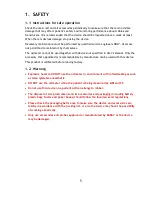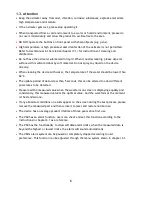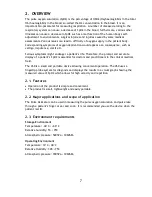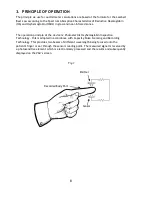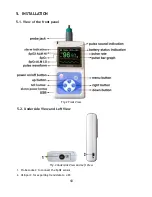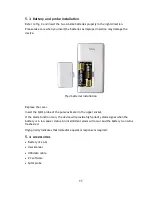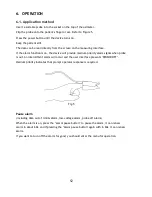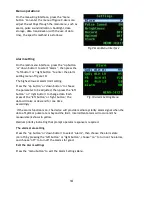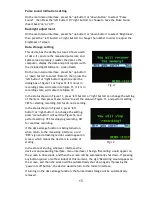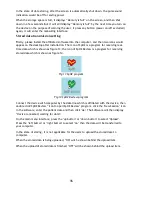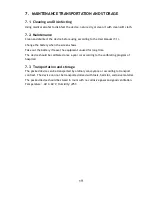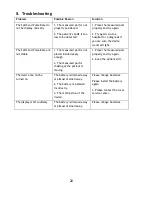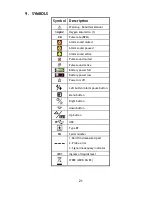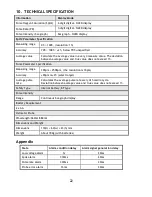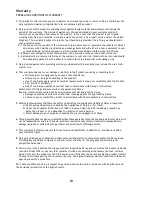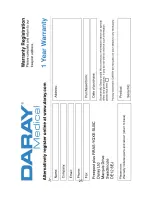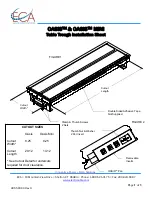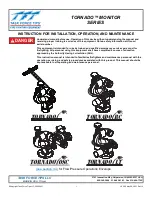
18
6.2. Attention for operation
Please check the device before using, and confirm that it works normally.
The measured part should be in a proper position (see the attached illustration of figure 5
for reference), or else it may result in inaccurate measure.
The SpO2 sensor and photoelectric receiving tube should be arranged in a way with the
subject’s
arteriole in a position there between.
The SpO2 sensor should not be used at a location or limb tied with arterial canal or blood
pressure cuff or receiving intravenous injection.
Do not fix the SpO2 sensor with adhesive or else it may result in venous pulsation and
inaccurate measure of SpO2 and pulse rate.
Excessive ambient light may affect the measuring result. It includes fluorescent lamp, dual
ruby light, infrared heater, direct sunlight and etc.
Strenuous action of the subject or extreme electrosurgical interference may also affect the
accuracy.
Please clean and disinfect the device after operating according to the User Manual (7.1).
6.3. Clinical restrictions
As the measure is taken on the basis of arteriole pulse, substantial pulsating blood flow of
subject is required. For a subject with weak pulse due to shock, low ambient/body
temperature, major bleeding, or use of vascular contracting drug, the SpO2 waveform
(PLETH) will decrease. In this case, the measurement will be more sensitive to interference.
For those with a substantial amount of staining dilution drug (such as methylene blue, indigo
green and acid indigo blue), or carbon monoxide hemoglobin (COHb), or methionine (Me+Hb)
or thiosalicylic hemoglobin, and some with icterus problem, the SpO2 determination by this
monitor may be inaccurate.
Drugs like dopamine, procaine, prilocaine, lidocaine and butacaine may also be a major
factor blamed for serious error of SpO2 measure.
As the SpO2 value serves as a reference value for judgment of anemic anoxia and toxic
anoxia, some patients with serious anemia may also report good SpO2 measurement.


